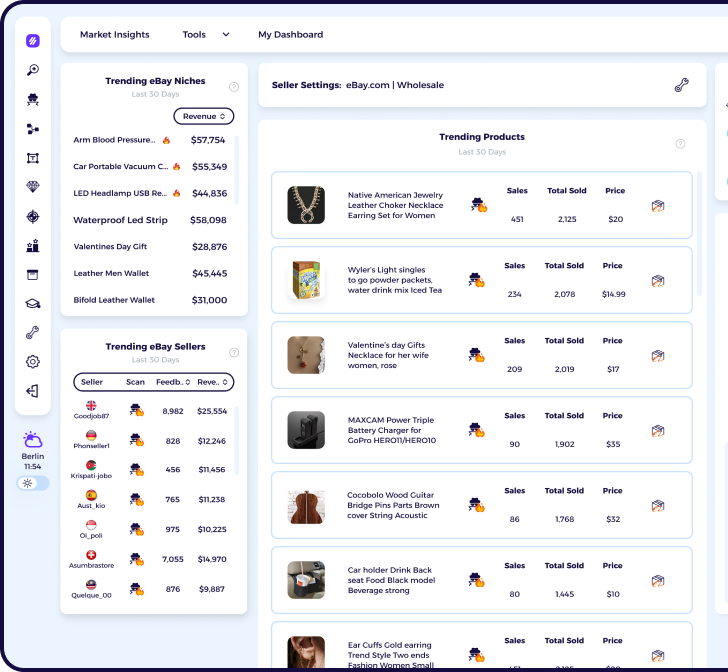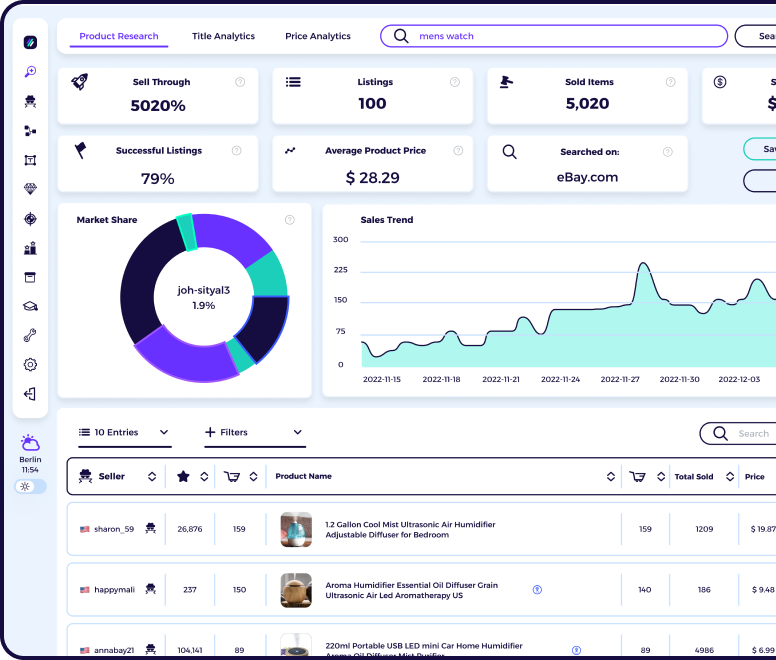Do you find it difficult to choose between Magento vs Shopify? You’re not alone. These two websites are the go-to option for many online business owners when building an online store. But which is the better choice?
At first glance, Magento and Shopify have many similarities. They are both popular ecommerce platforms with a large market share and millions of loyal customers.
But while they do have many similarities, the differences are just as many. These differences are the reasons why Shopify vs Magento are suited for unique business types and sizes. Some businesses are better suited for the Shopify platform, while others work better with the Magento platform.
This guide will enlighten you about your choices by providing a detailed glimpse into their features, similarities, and differences.
Let’s get in!
Article Overview:
Shopify vs Magento: Overview
Magento vs Shopify: Key Differences
1. Cost
2. Themes & Web Design
3. Marketing and Search Engine Optimization
4. Payment Gateway and Transaction Fees
5. Ecommerce and Sales Tools
6. Apps and Extensions
7. Reporting and Analytics
Shopify vs Magento: Pros and Cons
Shopify vs Magento: Final Thoughts
Shopify vs Magento FAQs
Shopify vs Magento: Overview
Is Magento different from Shopify? Or are they basically the same? These are questions newcomers to the online business landscape are curious to know – and we’re hoping to answer.
As two of the most popular ecommerce platforms, it helps to discern Shopify vs Magento from each other.
Shopify is an ecommerce platform that offers an easy-to-use online store solution. To build your Shopify store, you must pay a monthly fee (which varies according to your subscription plan). Your Shopify plan also determines the features and functionalities you can access to build your ecommerce store.

Magento is an open source platform and website builder. It’s like WordPress, that you can install on your computer for free. However, you must pay for your own web hosting provider (starts at $10 monthly), extensions, security, and other features to create an ecommerce website.

Magento offers an ecommerce solution for online stores, but it is not as comprehensive as what Shopify offers as an ecommerce platform. Specifically, some coding is required with Magento commerce development, and not all web developers specialise in the Magento platform. Therefore, you must find skilled and experienced Magento developers to create your ecommerce website.
Magento vs Shopify: Key Differences
With an idea of the similarities and features of Magento vs Shopify, let’s look deeper into the key difference between these ecommerce platforms.
1. Cost
The cost is a practical consideration when choosing between Shopify vs Magento. The cost difference is that Shopify is a hosted e commerce platform, while Magento is self-hosted. Therefore, you need to consider the additional cost of getting your web hosting provider when using Magento as an ecommerce platform.
But here’s the thing: Magento is free to install. You won’t be paying monthly subscription plans as you would with the Shopify pricing plan. The higher the tier on the Shopify pricing scheme, the more expensive the plan is (but you also have access to more features and ecommerce solution for your Shopify store).
With Magento, you must pay for the web hosting and everything else you need to keep your online store up and running.
2. Themes & Web Design
The next consideration when choosing between Magento vs Shopify is the website’s look. It’s important for online stores because you want to attract your customers to buy!
The Shopify themes store offers various options (140+), including paid or free themes. The paid Shopify themes start at $170, which can be pricey for some online business owners, especially startups. But once you have picked your Shopify themes, it is easy to customize with a drag-and-drop functionality.
As a bonus, the Shopify themes are mobile-optimized to target mobile shoppers and users easily. The paid and free themes can also be easily optimized by changing the color palette and images to suit your business branding.
The Magento themes selection pales in comparison to Shopify themes options. You can only choose up to nine themes, which aren’t free. Each theme will set you back at $499! Of course, you can create your own theme from scratch, but only if you know how to code. If you have the coding knowledge, building your website theme from scratch with Magento and fully customising it is easy. A highly skilled web developer can turn your Magento themes into a fully-functioning website with advanced Magento marketing features.
3. Marketing and Search Engine Optimization
The Magento marketing features rely heavily on its marketplace. If you want to integrate email marketing campaigns into your ecommerce store, you’d have to download and install extensions to your website.
With Shopify, there are many built-in marketing and SEO tools on top of its ecommerce functionalities. These solutions allow you to scale your online business easily, especially with multi-channel selling integrations.
Whether you have a Shopify store or a Magento store, it pays to have a market and product research tool to enhance online store performance. Store owners can turn to third-party research tools to identify the best-selling products for each e commerce platform, access and analyze actual sales performance for each keyword, and search engine optimization. Store owners can build these data-driven insights into the online stores and product listings to rank them higher on search engines.
Search engine optimization is critical for an ecommerce business since it helps to maximize visitor traffic to your website. With more traffic, you can put your products in front of potential paying customers.
4. Payment Gateway and Transaction Fees
Once you get your website up and running for either Magento and Shopify, the next thing to consider is the cost of running your online stores. Store owners must know the transaction fees for each sale and the payment gateway solutions available, which can determine how your customers will pay for their orders.
Magento and Shopify make connecting various payment processors to your online store easy. But Shopify offers its own payment processing gateway – Shopify Payments. If you integrate this into your Shopify store, you will pay zero transaction fees. If not, here are the transaction fees according to your Shopify pricing plan:
- Shopify Basic – 2.9% + 30 cents
- Shopify – 2.6% + 30 cents
- Advanced Shopify – 2.4% + 30 cents
Magento offers over 150 payment gateway solutions, but most of these solutions are suited for large businesses. If you wish to install traditional payment processors like Paypal, install them from the Magento marketplace.
5. Ecommerce and Sales Tools
Sales tools are critical when choosing an ecommerce platform such as Magento and Shopify. Shopify wins in this department for its impressive suite of ecommerce and sales tools. Basically, these tools are what help store owners make money from their ecommerce store.
Shopify offers the following sales tools from their e commerce platform:
- Ability to sell digital products
- Multi-channel selling
- Abandoned cart recovery
- Partnerships with various shipping couriers
Magento offers a few sales tools of its own, which can give the features from Shopify some serious contention.
- Multi-channel selling with Magento extensions
- Checkout page customization
- Discount options
- Abandoned cart recovery
6. Apps and Extensions
While both ecommerce platforms offer their built-in functionalities when building online stores, you must also have access to apps and extensions to enhance functionality and features. Both Magento and Shopify offer several possibilities regarding apps and extensions.
The Shopify Apps Store provides up to 1,200 apps and extensions that allow you to integrate email marketing campaigns, social media advertising, and shipping options into your Shopify store. The Magento Marketplace is also equally impressive, with up to 5,000 Magento extensions available to integrate into your Magento commerce site. However, only 1,900+ of the Magento extensions are free; the paid ones start at $30 and can go up to $199.
7. Reporting and Analytics
Access to reporting and analytics is necessary for ecommerce businesses to ensure you can optimize your website performance and maximize sales. You can always turn to Google Analytics data for your website, but it is best to have custom and built-in reporting for more detailed analytic insights.
Shopify offers detailed online store performance insights and sales trends so you can make data-driven decisions to enhance your Shopify store. On the other hand, Magento offers differing reporting and analytic capabilities based on the version or extensions you have on the website. For example, the Magento 2 version offers sales and customer tracking and review tracking.
Shopify vs Magento: Pros and Cons
Upon examining the key features of both Magento and Shopify, let’s compare the pros and cons side-by-side. It will help you organize your thoughts and simplify your choice between Magento vs Shopify.
Shopify Pros (Why Choose the Shopify Platform)
- An easy ecommerce solution with drag-and-drop functionality
- Allows multi-channel selling on Amazon, Facebook, and Instagram
- Vast selection of Shopify themes that are aesthetic and mobile-responsive
- Extensive options from the Shopify app store and several integration possibilities
- Offers timely updates and is automatically implemented to your ecommerce website
- High security and reliability even for the Basic Shopify plan
- Easy to set up and quick to launch
- Advanced analytics and reporting capabilities
Shopify Cons (Why NOT Choose the Shopify Platform)
- Shopify is expensive, especially if you consider the cost of the third party Shopify apps
- No web hosting on your own server
- The transaction fees can be expensive (especially if you don’t use Shopify payments)
Magento Pros (Why Choose the Magento Platform)
- A flexible, open source platform with no limitations on designing your store
- Ideal for medium to large businesses
- An intuitive user interface for more control
- Various payment options are available
- Can be integrated into over 1,000 plugins and extensions for maximum customization
- Can handle a large amount of online store traffic
Magento Cons (Why NOT Choose the Magento Platform)
- Requires the expertise of Magento developers to do coding
- The security Magento offers depends on the site configuration
- Need to find your own hosting provider
- Not easy to install and launch
- Best for enterprises and not suited for beginners
Shopify vs Magento: Final Thoughts
As you know now, Magento and Shopify have some similarities and key differences. Therefore, these ecommerce platforms are better suited for certain types of businesses.
The Shopify platform is generally more user- and beginner-friendly than Magento. Shopify offers an easy drag-and-drop website builder functionality, which enables you to launch your online store faster.
On the other hand, Magento e commerce platform takes more time to use. You might even have to hire Magento developers to help with the coding for the ecommerce website. It’s not ideal for beginners because you must have the technical know-how and coding experience of a web developer to transform your vision into a usable online store. Good thing, though, you have access to the Magento forum wherein you can find a community of Magento developers and experts to turn to for advice.
With that said, use Shopify for your ecommerce business if you want to get your online store running quickly. It is also recommended if you have a website builder, such as Wix or Squarespace. You can also enjoy Shopify’s other perks, such as 24/7 support, Shopify apps, and various Shopify themes.
On the other hand, anyone with web developer experience or coding knowledge can turn to the Magento e commerce platform for building online stores for medium to large businesses. You can get total creative freedom without any limitations on designing your store as long as you know how to code. It’s ideal for big brands that want to generate big revenues for their ecommerce business.
Shopify vs Magento FAQs
Is Magento better than Shopify?
Shopify is easier to use than Magento, but the latter is more flexible and offers more customization options. Magento is ideal for online store owners with coding knowledge since you can tweak the design with codes.
While it is trickier to use, it works for those with moderate to advanced web design knowledge and experience. It is also ideal for ecommerce store owners that want to tweak their website design to make them stand out from the competition.
Why do people still use Magento?
The Magento ecommerce platform allows you to build a mobile-friendly and optimized website. Merchants in the Magento platform can optimize, modify, and adjust the elements of their online store to create a mobile-friendly version of their website.
Is Magento more expensive than Shopify?
Magento does not have the same monthly pricing plans that Shopify offers. However, the overall cost of creating an online store with Magento is more expensive. It is an open-source ecommerce platform that entails more cost in building a theme and design for an ecommerce website.
Can Shopify integrate with Magento?
Yes, it is possible to integrate Shopify with Magento. You need a data synchronization platform to facilitate the transfer of ecommerce website data and information.
What is the disadvantage of Magento?
The complexity of the Magento ecommerce platform is its main disadvantage. Creating online stores with Magento can be more challenging than setting up a Shopify store. With Magento, you need to have a team of professional website testers and developers to navigate the complex structure of this ecommerce platform.
Another disadvantage of choosing Magento vs Shopify is the development cost involved. Building an ecommerce website using Magento entails a large investment of knowledge and time compared to Shopify which you can easily set up and launch.
Want to review our other Shopify comparison articles?
Check out our comparisons of Shopify vs:






